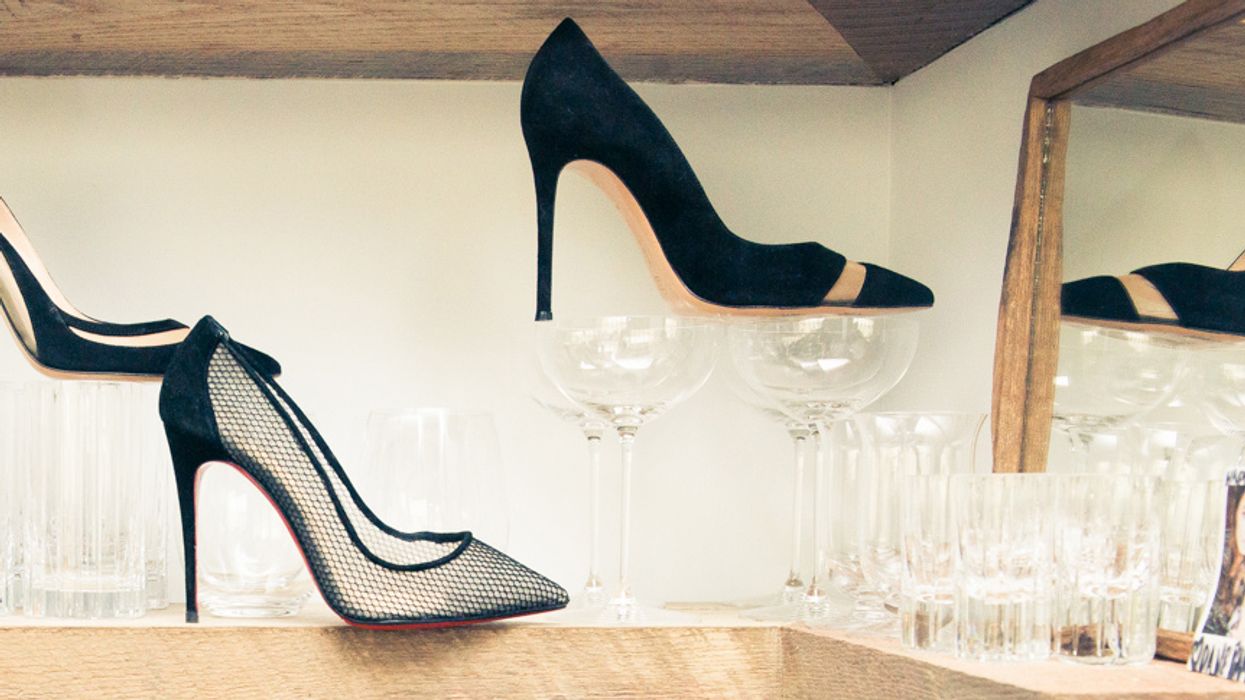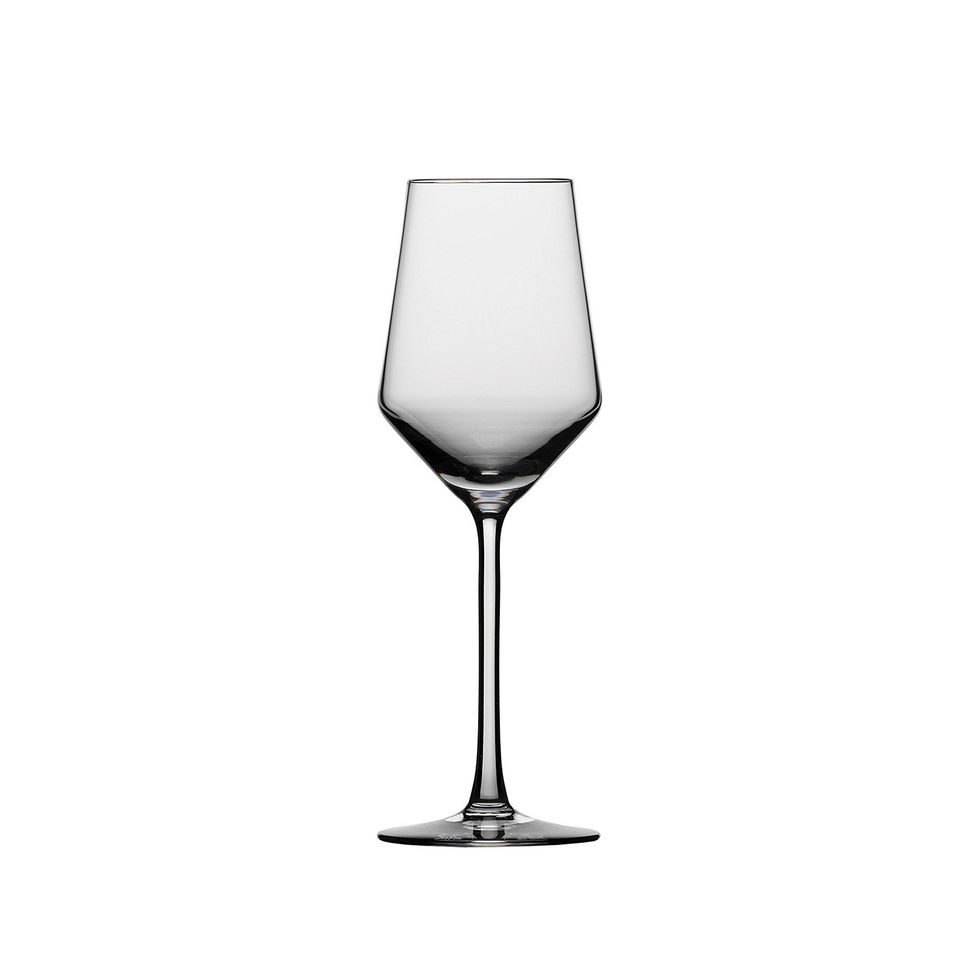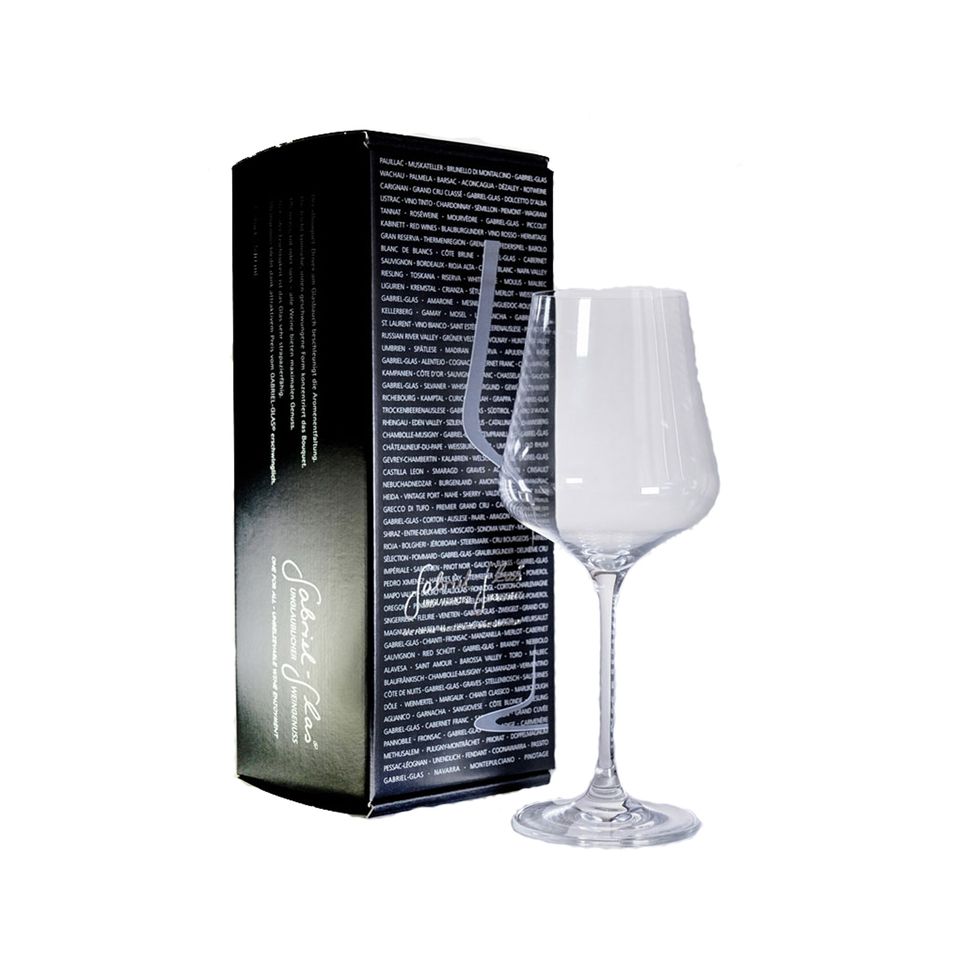The Adult Guide to Buying Wine Glasses
Because seriously, it’s time to stop drinking Bordeaux out of a coffee mug.

Life just went from all-rosé-all-the-time to... making choices?! Shocking, we know, but so it goes when the season changes and you’d like a glass of wine to go with, well...everything. But whether you’ve been drinking from a solo cup or customized crystal, the transition away from the pink stuff is an opportunity to reevaluate your wine game. You’re going to be home more. You’re going to be entertaining more. You’re going to start to wonder, ‘How many types of wine glasses do I actually need, and are those really big ones worth the cabinet space?’ Having multiple wine glasses for multiple varieties of wine is a level of adulting we’re not familiar with, so we asked Eleven Madison Park sommelier Jane Lopes to school us/hold our hands through the glass buying process—cause she’s got her hands on some of the best wine in the world and still enjoys a drink in the shower. Respect. So whether you’ve got room for exactly one receptacle per roommate or just inherited an array of fine-but-funky crystal, read on and remember: keep your hands on the stem (if you’ve got one) and save those “Champagne” flutes for your Sunday morning mimosas.
Let’s start basic: why are there different kinds of wine glasses?
“Wine glasses are designed to highlight and/or manage different elements in a wine. Glasses can be designed to preserve bubbles, emphasize structure, maximize aromatics, minimize alcohol, and any combination of the above. In general, aroma focus and oxygen exposure in different styles of wine is a huge part of how and why wine glasses are designed. Also, we drink with our eyes as much as we do with our mouths, and having something visually appealing is a huge part of the experience.”
Speaking of visually appealing, are stemless glasses really that terrible?
“Stemless glasses are far more vilified than need be. There are cons: you can get oils and scents from your hands on the bowl of the glass, which may affect how you experience the aromas and flavors of the wine [Ed note: we had no idea you were actually really supposed to keep your fingers on the stem of a wine glass for a reason…]. Your hand on the glass will also affect the temperature of the wine, warming it up when perhaps that’s not desired. But a stemless glass also has its uses: it’s the perfect in-the-shower glass, the perfect on-the-fire-escape glass, and the perfect glass to take on a picnic.”
We’re on the same page there, but let’s stay on the subject of myths.
“I think there are myths at both ends of the spectrum to dispel. The idea that you need a very specific type of glass for each wine–that you won’t be able to enjoy the wine without THIS EXACT GLASS–is quite extreme. The other end of the spectrum, though, the populist belief that wine can be appreciated fully in any vessel–tumbler, coffee mug, wooden clog–is also incorrect. Wine demands a precious few things to shine: a tapered neck, a thin lip, and, oh yeah, GLASS (well, crystal, really). It should not be denied those things.”
How about Champagne: coupes versus flutes?
“Most sommeliers would unabashedly say NEITHER. Flutes are designed to preserve bubbles, and not much more. There are some more enlightened flutes being designed these days that don't stifle the aromatics of sparkling wine, but they are few and far between. Coupes don't do aromatics any favors either, and bubbles even less so. Most sommeliers reach for an all-purpose white wine glass or a Riesling glass to best showcase sparkling wine, while still maintaining bubbles. Save the flute for a mimosa and the coupe for a cocktail.”
One less glass to own—score! Now let’s say – just hypothetically – we’re low on space and want to invest in exactly one type of wine glass. Thoughts?
“If you only have room for one type of wine glass, look for an all-purpose one that is designed to compliment several types of wine styles. Zalto makes a great universal glass, as does Gabriel Glas. I think part of it comes down to personal preference too. I know sommeliers who will drink a delicate Riesling or Champagne out of a Bordeaux glass, and I know sommeliers (myself included) who will drink Barolo out of a narrow, tapered Riesling glass. This is my go-to.”
So, what’s the best kind of wine to serve in an unconventional glass, should one find or inherit something beautiful but a bit um, oddly shaped?
“I mostly stick to cocktails in my unconventional glasses, but I've been known to happily drink wine from a romer (a classic Alsatian glass with a colored stem) or a delicately etched, footed Champagne flute. I would say that easy-going sparkling wine, cider, and beer fare better in these unconventional glasses.”
Finally, when out in the wild and about to splurge on something beautiful, anything to keep in mind?
“Some of it just comes down to personal preferences. But I will echo the idea of a thin lip, a moderate sized bowl (I find most wine gets lost in glasses over 20 ounces), and durability. Glasses are no good to you if they’re broken.”


